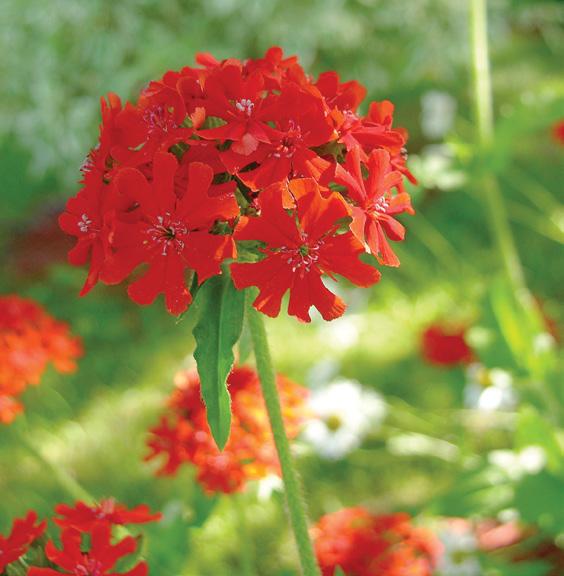
2 minute read
Wildflowers and weeds: Bladder campion

Bladder campion.
On its own, bladder campion is a pretty plant with branching stems, narrow lanceolate leaves and panicles of nodding white or pinkish flowers with five triangular, split “petals” emerging from a swollen papery, veined calyx which gives the flowers its descriptor name “bladder”. There are three stamens or styles that extend beyond the petals or “teeth” in a pleasing way. The flowers emerge on stems one to three feet high that are smooth to the touch.
Advertisement
Beloved as a food in some Mediterranean countries, the young leaves are used in salads, omelettes and even pastas. The leaves are high in vitamins K, E, B9 and C as well as manganese. They taste a little like a bitter green pea. The plants contain saponin, a soapy substance, which is mildly toxic, but can be safely eaten cooked. Pick the leaves before the plant flowers for the best taste.
It is a preferred plant of a couple of insects, but most mammals will opt for other plants because of the saponin. If there is nothing else to forage, though, animals will eat bladder campion. The nectar is sweet and enticing for long-tongued insects and birds and that is how it is pollinated.

Bladder campion seed head.

Moss campion.

Maltese Cross.
Bladder campion has many names: maiden’s tears, sea pink, bubble poppy and birds’ eggs, to name just a few. Its Latin name is Silene vulgaris and it is named for Silenus, the fosterfather of Bacchus, the Roman god of wine. Silenus is typically depicted as covered in sea foam, which relates to the saponin of the plant.
Imported to North America in the 18th and 19th centuries, bladder campion has been most successful in the eastern part of the continent but can be found in most areas except the far north. Some regions consider it to be a wildflower. Others see it as a weed, but it is a mild offender. Although a good self-sower, it has a tap root that can be readily pulled. It prefers sandy, rocky, chalky soil so mainly proliferates on road allowances, or in open woods, waste lands and pastures over cultivated fields. It blooms June to August.
There are cultivated flowers in the same genus: Silene chalcedonica, or Maltese cross, and S. aucalis, or moss campion. While you can buy seed for bladder campion, though more so in Europe than Canada, there are no cultivars of the plant that we could find.
It has some minor use medicinally. Roots can be mixed into milk and used and an emetic to counter poisoning or as a mild laxative for constipation pains. Infusions have been used to relieve itch and the juice of the plant has been used to treat conjunctivitis or eye inflammation.
Bladder campion is also known to be highly tolerant of heavy metals, making it useful in cleaning up sites contaminated with the stuff, particularly zinc. The plant sequesters zinc and other problematic substances, but to use it for its metal-eating purposes, the plant must be pulled and deposited elsewhere after it’s done its job.










